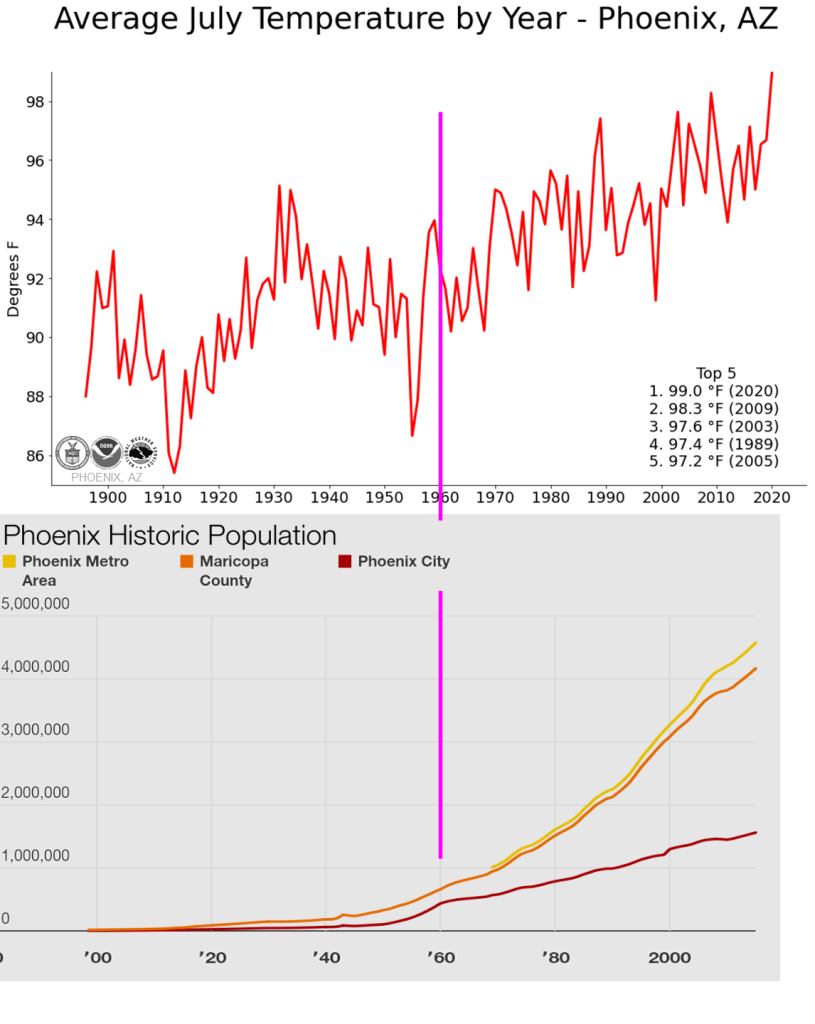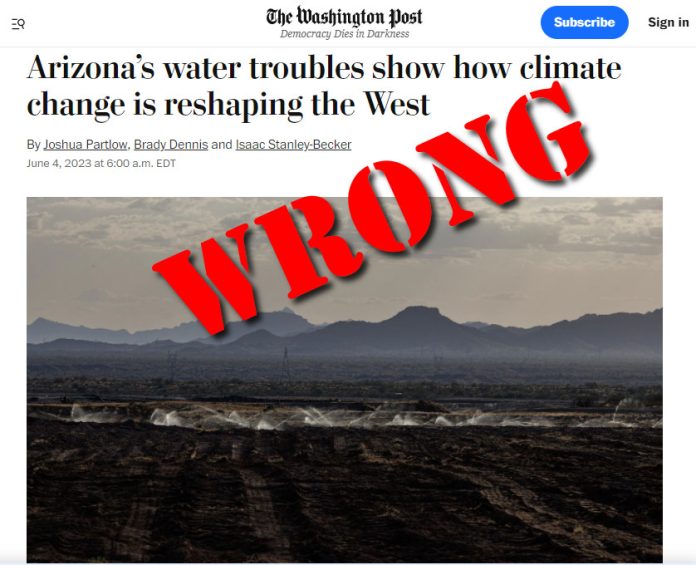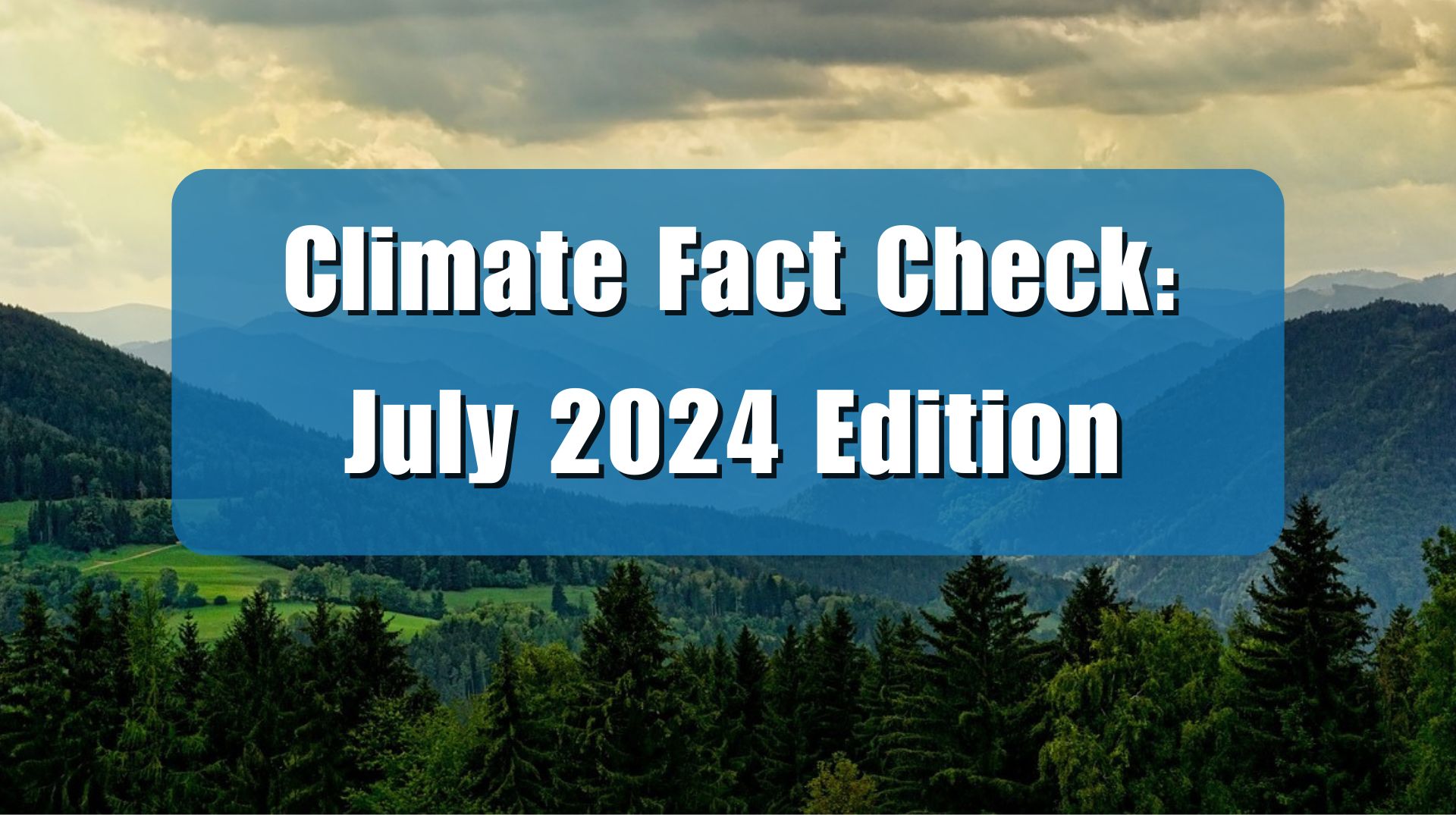On June 4, 2023, The Washington Post (WaPo) published a story titled “Arizona’s water troubles show how climate change is reshaping the West.” The claim that climate change is the driver behind water issues in the Western United States is false. It ignores the historical context of water issues that go back decades, the impact of population growth and development, and the current status of drought in the region.
In the article, WaPo make these claims:
The decision by Arizona in the past week to limit residential construction in some parts of the fast-growing Phoenix suburbs is another major warning about how climate change is disrupting lifestyles and economies in the West. Throughout the region, glaciers have receded, wildfires have expanded, rivers and lakes have shrunk. It has been a wet winter, but the deeper trends brought on by the warming atmosphere persist.
…
In one of the fastest-growing metropolitan areas in the country, it’s a boom time — water-intensive microchip companies and data centers moving in; tens of thousands of houses spreading deep into the desert. But it is also a time of crisis: Climate change is drying up the American West and putting fundamental resources at ever greater risk.
Drought has been common in Arizona throughout history, it lying in one of the most arid parts of North America. Still there is almost no drought there now. Apparently, WaPo was unable to examine the latest data on drought for the region. According to the U.S. Drought Monitor, most of Arizona is not currently in a drought at all, as seen in the screen capture below:
The WaPo also downplays the largest single cause for water shortfalls in Arizona – population growth. First, population growth creates warmer temperatures (due to the Urban Heat Island effect) which often erroneously get blamed on climate change. For example, Figure 1 compares the July average temperature in Phoenix to Phoenix’s population growth for the same period. Note that the purple 1960 marker shows when growth really exploded in Phoenix, while at the same time, that is when temperatures really started climbing.

Even more important than Phoenix’s growing population’s effect on temperatures is its direct impact on water use. More people demand more water for all uses. Phoenix and Arizona as a whole are located in one of the most naturally arid regions on the North American continent. Water was already scarce before Phoenix became one of the fastest growing metropolitan regions in the United States. In addition to groundwater pumping, Phoenix makes heavy use of Colorado river water via the Lake Mead reservoir. Just last year, there was this headline: Phoenix agrees to leave additional water in Lake Mead in effort to slow reservoir’s decline. In Climate at a Glance: Water Levels – Lake Mead, the root cause of water supply issues is revealed:
[D]uring the past century, much of the continental United States has enjoyed more abundant precipitation as the planet has warmed. Further, the U.N. Intergovernmental Panel on Climate Change (IPCC) has confirmed that since 1951 there has been an increase in precipitation in mid-latitude global regions, including the United States, with no detected global precipitation decline. It is also important to note the Lake Mead reservoir serves water to Arizona, California, and Nevada.
Every one of those states has experienced significant population increases and greater water demands since the reservoir was filled in 1935, an important factor when considering Lake Mead’s water levels.
In fact, as shown in Figure 2, water withdrawals due to population growth has actually exceeded the available supply with some regularity for the past 30 years.

Population increases in an arid region, not climate change, is the cause of Arizona’s current water woes. The WaPo completely misses this fact, instead exploiting Arizona’s water problems to push the climate crisis narrative in which each and every bad thing in the world is blamed on climate change, even when the facts say otherwise. This lack of investigative journalistic honesty has become commonplace at the WaPo, where apparently “Science Dies in Darkness.”


















“wildfires have expanded”
Wildfires require fuel. Right now the mountains around Phoenix are abnormally green instead of dusty brown. Locals expect big fire in a few months.
“Population increases in an arid region, not climate change, is the cause of Arizona’s current water woes.”
Statement verified by a current resident. 2023 Phoenix makes 2003 Boston look tiny.
Sorry, three messages in a row, but source article contains a short-term prediction to note:
“… recent reports warn that it could disappear within five years…”